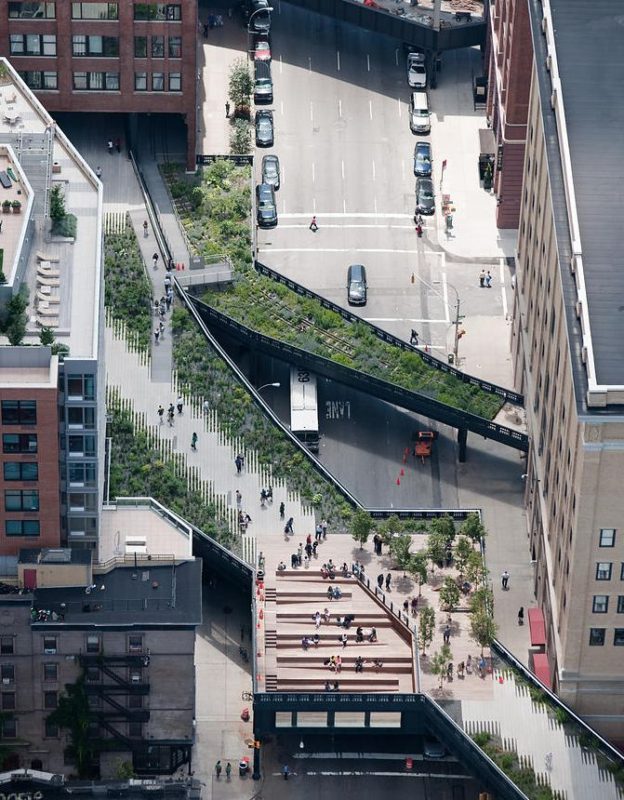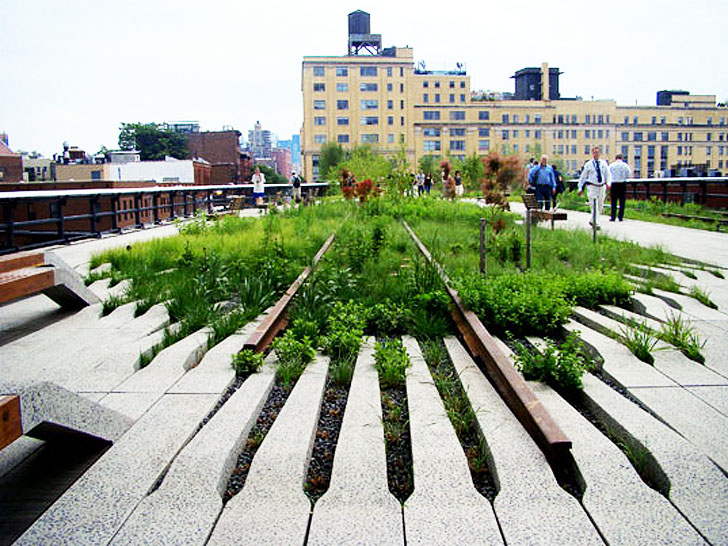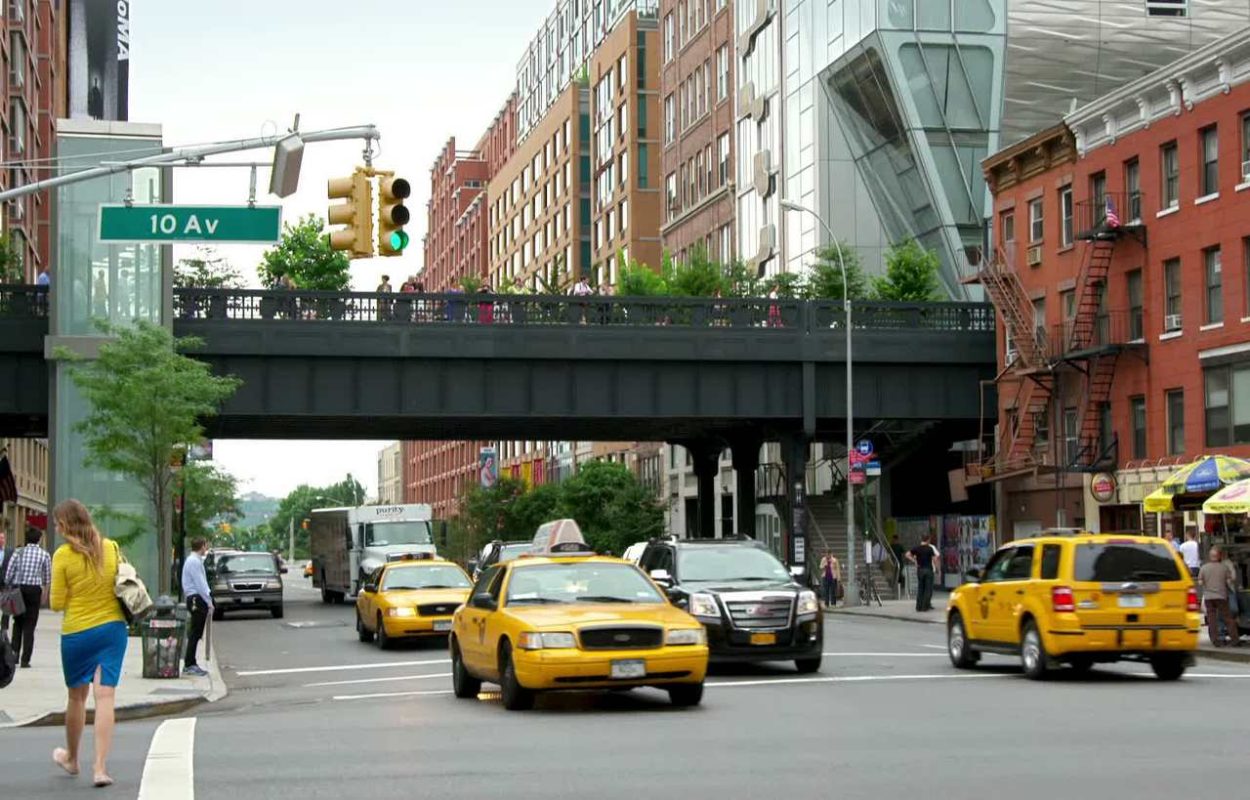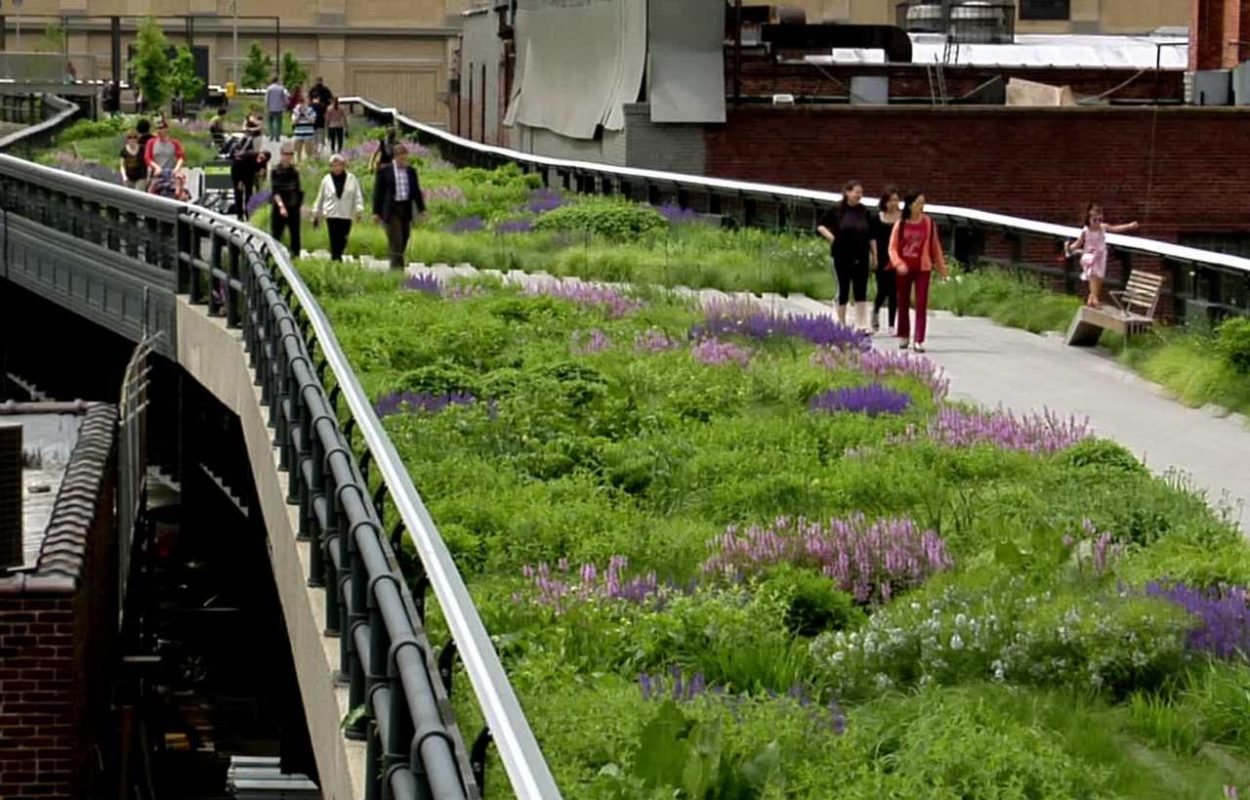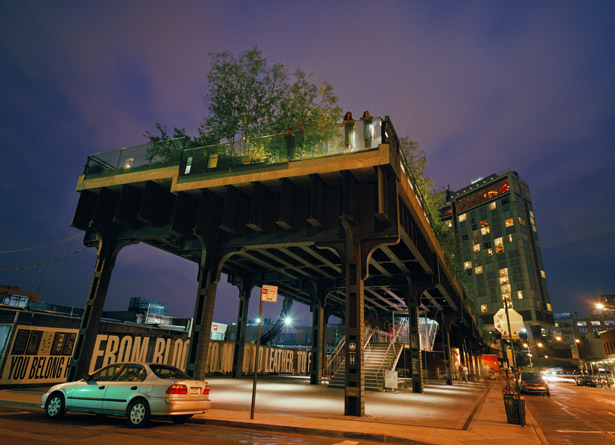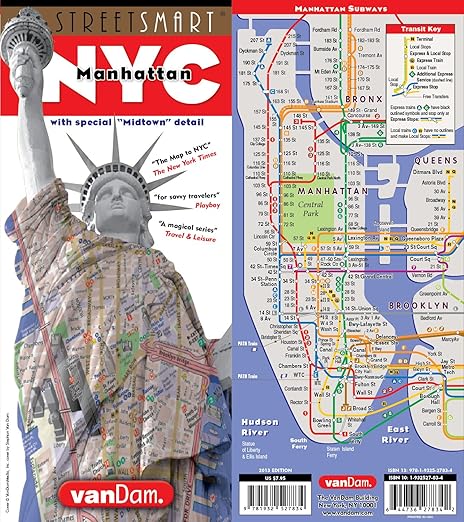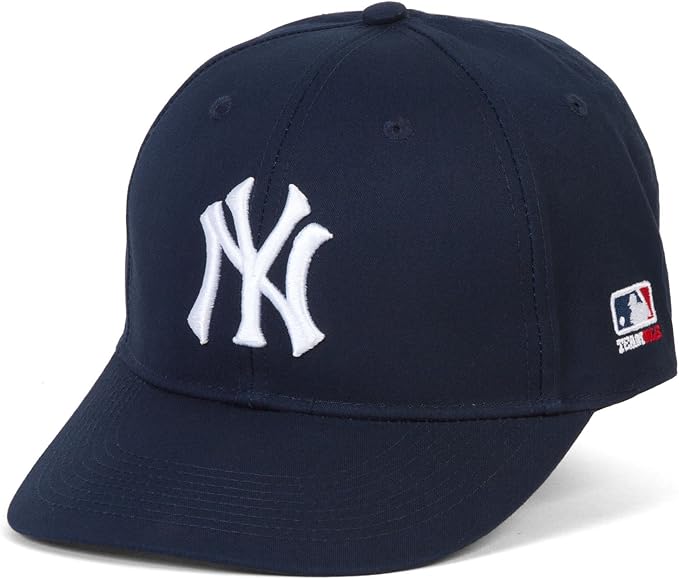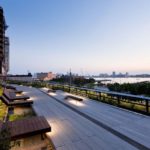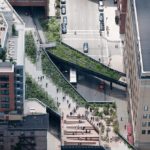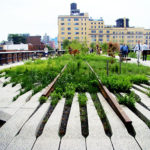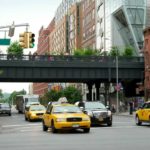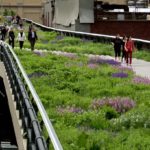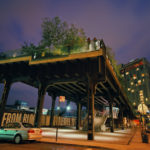The High Line
Parks in large cities are usually thought of as refuges, as islands of green amid seas of concrete and steel. When you approach the High Line in the Chelsea neighborhood on the lower west side of Manhattan, what you see first is the kind of thing urban parks were created to get away from—a harsh, heavy, black steel structure supporting an elevated rail line that once brought freight cars right into factories and warehouses and that looks, at least from a distance, more like an abandoned relic than an urban oasis.
The High Line is an elevated freight rail line transformed into a public park on Manhattan’s West Side. It is owned by the City of New York, and maintained and operated by Friends of the High Line. Founded in 1999 by community residents, Friends of the High Line fought for the High Line’s preservation and transformation at a time when the historic structure was under the threat of demolition. It is now the non-profit conservancy working with the New York City Department of Parks & Recreation to make sure the High Line is maintained as an extraordinary public space for all visitors to enjoy. In addition to overseeing maintenance, operations, and public programming for the park, Friends of the High Line works to raise the essential private funds to support more than 90 percent of the park’s annual operating budget, and to advocate for the transformation of the High Line at the rail yards, the third and final section of the historic structure, which runs between West 30th and West 34th Streets.
Walking on the High Line is unlike any other experience in New York. You float about 25 feet above the ground, at once connected to street life and far away from it. You can sit surrounded by carefully tended plantings and take in the sun and the Hudson River views, or you can walk the line as it slices between old buildings and past striking new ones. I have walked the High Line dozens of times, and its vantage point, different from that of any street, sidewalk, or park, never ceases to surprise and delight. Not the least of the remarkable things about the High Line is the way, without streets to cross or traffic lights to wait for, ten blocks pass as quickly as two.
The park’s attractions include naturalized plantings that are inspired by the landscape that grew on the disused tracks and views of the city and the Hudson River. The trail is made of pebble-dash concrete walkways that swells and constricts, swings from side to side, and divides into concrete tines that meld the hardscape with the planting embedded in railroad gravel mulch. Stretches of track and ties recall the High Line’s former use. Portions of track are adaptively re-used for rolling lounges positioned for river views. Most of the planting, which includes 210 species, is of rugged meadow plants, including clump-forming grasses, liatris, and coneflowers, with scattered stands of sumac and smokebush, but not limited to American natives. At the Gansevoort Street end, a grove of mixed species of birch already provides some dappled shade by late afternoon. Ipê timber for the built-in benches has come from a managed forest certified by the Forest Stewardship Council, to ensure sustainable use and the conservation of biological diversity, water resources, and fragile ecosystems.
The High Line Park also has cultural attractions. As part of a long-term plan for the park to host temporary installations and performances of various kinds. Creative Time, Friends of the High Line, and the New York City Department of Parks and Recreation commissioned The River That Flows Both Ways by Spencer Finch as the inaugural art installation. The work is integrated into the window bays of the former Nabisco Factory loading dock, as a series of 700 purple and grey colored glass panes. Each color is exactly calibrated to match the center pixel of 700 digital pictures, one taken every minute, of the Hudson River, therefore presenting an extended portrait of the river that gives the work its name. Creative Time worked with the artist to realize the site-specific concept that emerged when he saw the rusted, disused mullions of the old factory, which metal and glass specialists Jaroff Design helped to prepare and reinstall. The summer of 2010 featured a sound installation by Stephen Vitiello, composed from bells heard through New York. Lauren Ross, formerly director of the alternative art space White Columns, served as the first curator for the High Line Park. During the construction of the second phase between 20th and 30th Streets, several artworks were installed including, Sarah Sze’s “Still Life with Landscape (Model for a Habitat)” a sculpture made of steel and wood, located on the line near 20th and 21st Streets; this structure was built as a house for fauna such as birds and butterflies. Kim Beck’s “Space Available” was installed on the roofs of three buildings visible from the southern end. Three 20-by-12-foot (6.1 by 3.7 m) sculptures looked like the armature of empty billboards, constructed like theater backdrops, so they look three-dimensional from a distance. Also installed during the second phase of construction was Julianne Swartz’s “Digital Empathy”, a work that utilizes audio messages at restrooms, elevators, and water fountains.
Park Entrances:
Access to the High Line is possible via any of the access points listed below:
Gansevoort Street and Washington Street (elevator access)
14th Street (elevator access)
16th Street (elevator access)
18th Street
20th Street
23rd Street (elevator access)
26th Street
28th Street
29th Street (elevator access)
30th Street
34th Street (ramp access) – open 7 a.m. to sunset
The High Line is wheelchair accessible.

